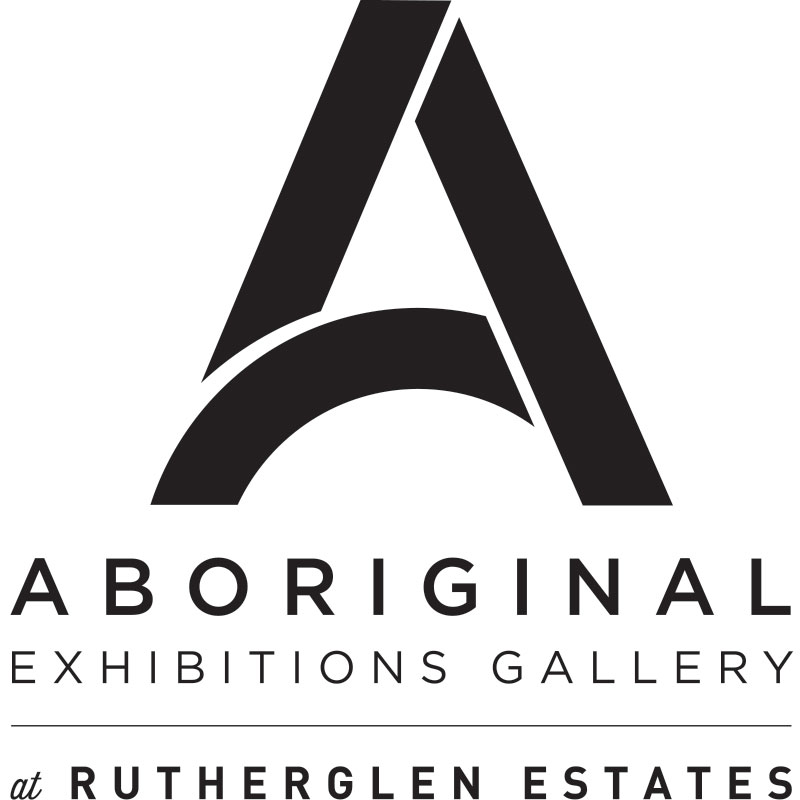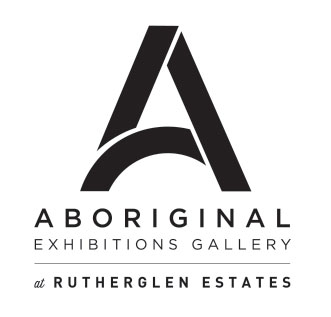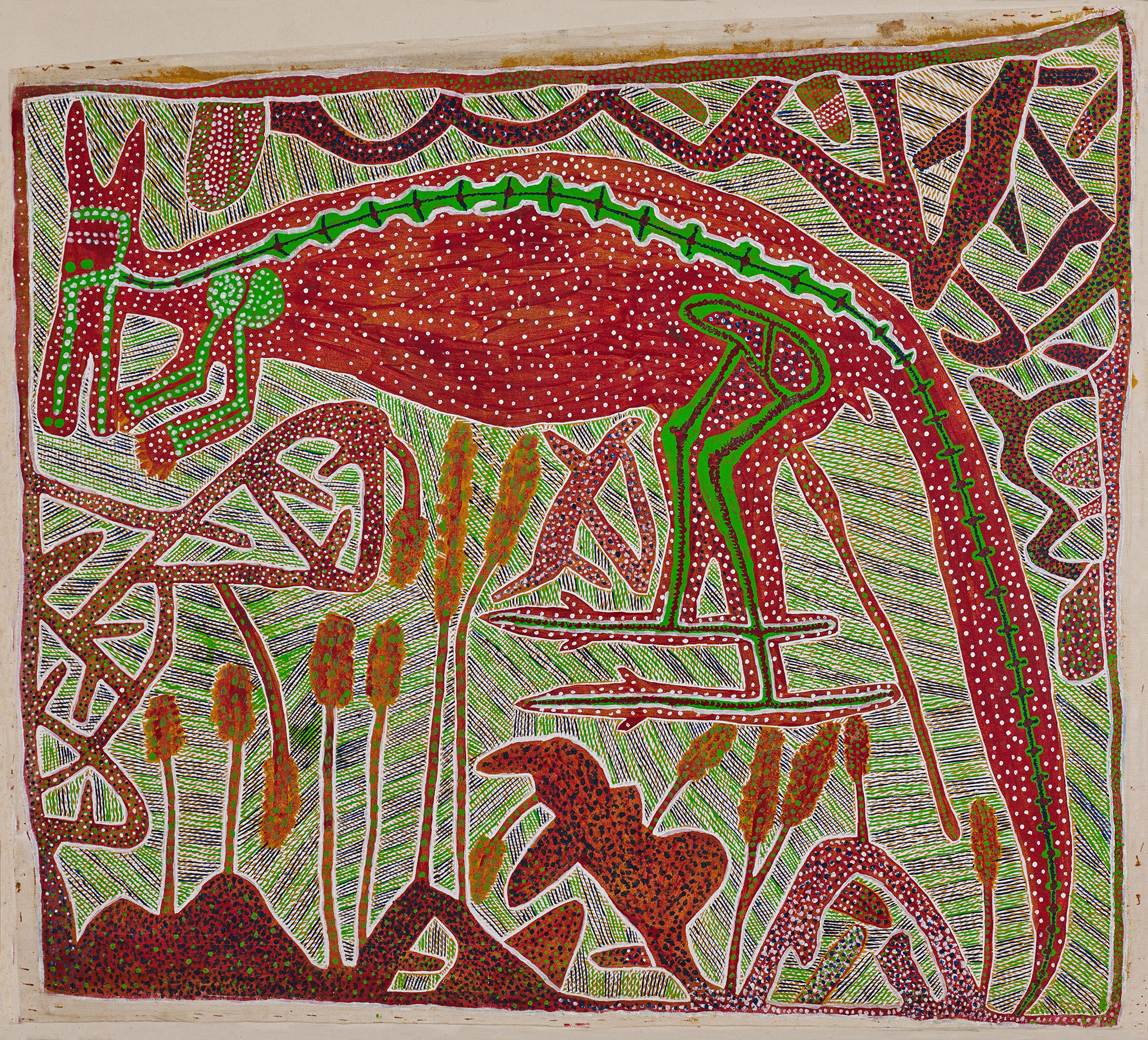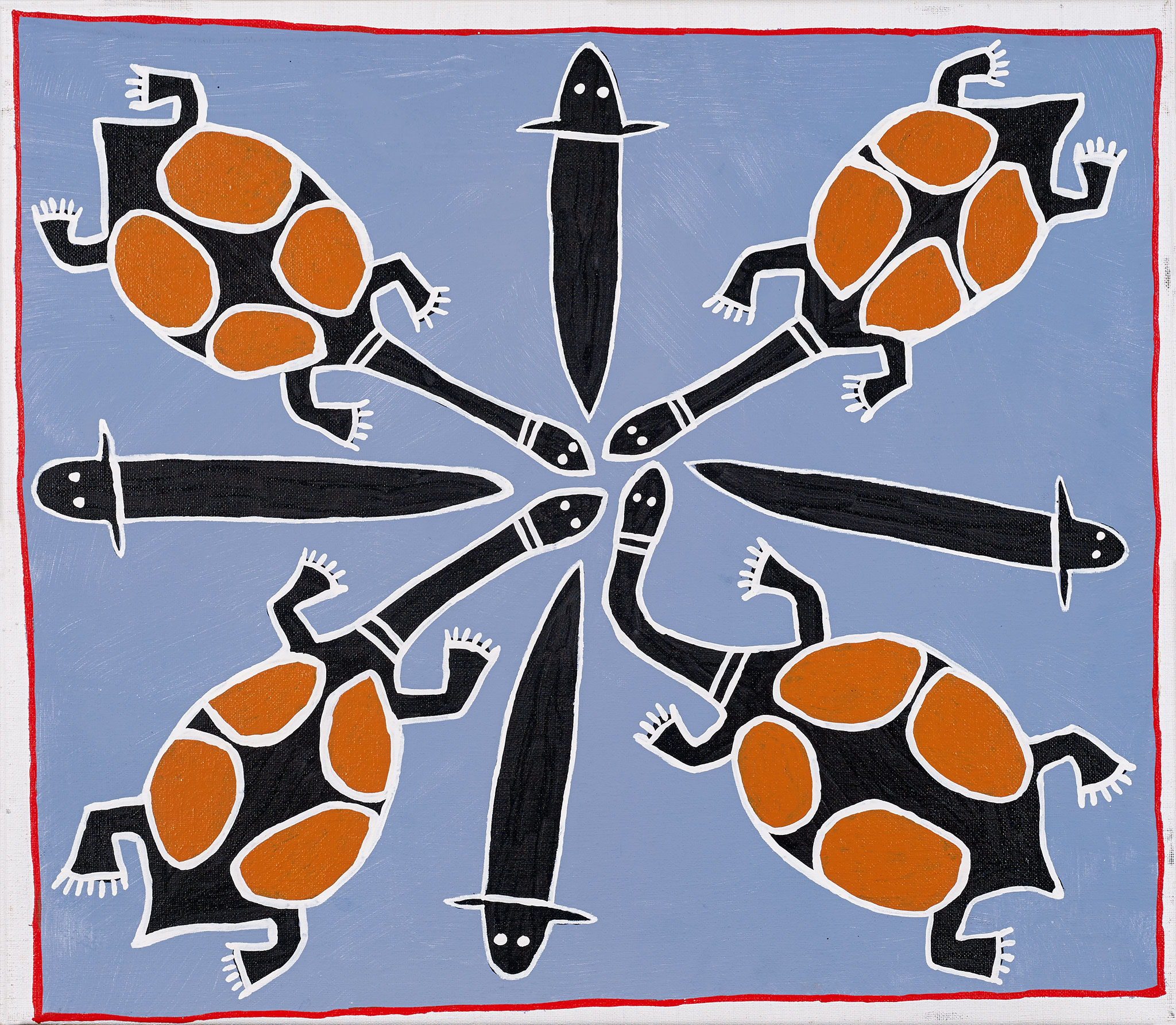Djambu Barra Barra’s early works were distinguished by his complex and daring use of x-ray and cross-hatched bark painting styles, however cleverly adapted using bright acrylics on canvases. His technique extended the boundaries of traditional bark painting by depicting a wide array of introduced animals, traditional totems, weapons, spirits and mortuary figures.
Djambu Barra Barra was one of the first contemporary artists to emerge from South East Arnhem Land at Ngukurr, situated on the banks of the Roper River.
Ngukurr [Nook-koor], ‘a place of many stones’ is today an Aboriginal community of about 800 people from nine different language groups, many of whom are displaced from their ancestral countries. Originally an early 1900s Anglican mission, Ngukurr provided a haven for the Roper River peoples fleeing the violence of pastoralists moving up from the south. People of many different clans and language groups congregated there, including the Alawa, Mara, Ngalakan, Ngandi, Nunggubuyu, Rittarrngu and Wandarang clans. This history is reflected in the subject matters and diversity of styles of the Ngukurr artists’ paintings. Ngukurr artists are famous for exploring new painting styles and techniques and recontextualising them to become something wholly unique.
The first canvases from Ngukurr date back to March 1987 from painters such Ginger Riley Munduwalawala, Djambu Barra Barra and Amy Jirwulurr Johnson.





